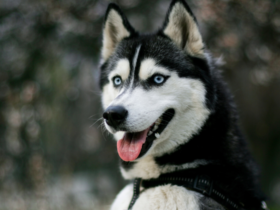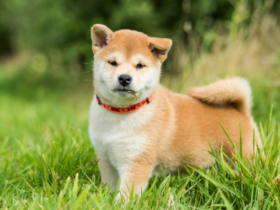Taking your dog to a parade can be an exciting and fun experience for both of you. The sights, sounds, and smells of a parade offer plenty of stimulation and new experiences for your dog. However, parades can also be overwhelming and potentially stressful for dogs if not properly managed. Whether you’re planning to take your dog to a local street parade, a holiday event, or a large festival, it’s essential to prepare and ensure that your dog is comfortable and safe in a crowded environment. In this guide, we’ll explore expert tips from dog trainers on how to make your parade outing a success.
1. Assessing Your Dog’s Readiness
- Know Your Dog’s Temperament: Not all dogs are suited for crowded events. If your dog is easily stressed, anxious, or reactive, a parade might not be the best environment for them. Dogs that are calm, well-socialized, and enjoy being around people are better candidates for this type of outing.
- Practice in Smaller Settings: Before taking your dog to a large parade, expose them to smaller crowds to gauge their reaction. Take them to a busy park, a farmer’s market, or a smaller community event to see how they handle the noise and commotion.
2. Training Essentials
- Basic Commands: Ensure your dog is well-versed in basic commands like “sit,” “stay,” “leave it,” and “come.” These commands are crucial in a busy setting where distractions are abundant.
- Leash Training: Your dog should be comfortable walking on a leash without pulling. In a crowded environment, it’s essential to keep your dog close to avoid accidents or interactions with other dogs that might not be friendly.
- Desensitization: Gradually expose your dog to the types of stimuli they’ll encounter at a parade, such as loud noises, crowds, and unusual sights (like people in costumes or vehicles). This can help reduce anxiety on the day of the event.
3. Preparing for the Day
- Pack the Essentials: Bring a leash, poop bags, water, and a portable water bowl. You may also want to pack some of your dog’s favorite treats to reward good behavior and help them feel more comfortable.
- Comfort and Safety Gear: Consider using a harness instead of just a collar, as it gives you more control and is generally more secure. If your dog is sensitive to noise, a pair of dog-friendly ear protectors can help reduce the stress caused by loud sounds like marching bands or fireworks.
- Dress Appropriately: If the parade takes place in hot weather, make sure your dog won’t overheat. Light clothing, cooling vests, or simply keeping your dog in the shade can prevent heat-related issues.
4. During the Parade
- Arrive Early: Arriving early allows you to find a spot with enough space for your dog to feel comfortable. It also gives your dog time to acclimate to the environment before the parade starts.
- Mind the Crowds: Keep a close eye on your dog’s body language. Signs of stress include excessive panting, yawning, drooling, or trying to hide. If your dog seems overwhelmed, consider moving to a less crowded area or leaving early.
- Interaction With Others: Be mindful of how your dog interacts with people and other dogs. Some parade-goers might want to pet your dog, but it’s okay to politely decline if you think it might overwhelm your dog. Always ask permission before allowing your dog to greet another dog.
5. Dealing With Sensory Overload
- Noise Sensitivity: Parades can be noisy, with marching bands, sirens, and cheering crowds. If your dog is sensitive to noise, position yourself further away from the loudest areas, or consider using noise-canceling gear for your dog.
- Visual Stimulation: Parades often feature floats, costumes, and other visually stimulating elements that might be unusual for your dog. Stay calm and provide reassurance if your dog appears startled by these sights.
- Scents and Food: Parades often have food vendors, which means lots of tempting smells. Keep a close watch to ensure your dog doesn’t eat anything off the ground, as some foods can be harmful to them.
6. Managing Your Dog’s Needs
- Hydration: Keep your dog hydrated, especially if the weather is warm. Offer water regularly and monitor for signs of dehydration, such as excessive panting or lethargy.
- Bathroom Breaks: Plan for bathroom breaks, especially if you’ll be at the parade for an extended period. Find a quiet spot where your dog can relieve themselves without being overwhelmed by the crowd.
- Rest and Retreat: If the parade is long, give your dog breaks in a quieter area away from the main crowd. This can help them recharge and reduce stress.
7. After the Parade
- Post-Parade Wind Down: After the parade, allow your dog to wind down in a calm environment. A quiet walk in a park or some downtime at home can help them relax after the excitement of the day.
- Check for Injuries or Discomfort: Inspect your dog’s paws for any injuries, especially if they’ve been walking on hot pavement or rough surfaces. Also, check their overall condition to ensure they didn’t sustain any injuries or ingest anything harmful.
- Monitor Behavior: Some dogs might experience delayed stress after a big event like a parade. Keep an eye on your dog’s behavior in the hours and days following the parade. If they seem unusually anxious or unwell, consult your veterinarian.
8. Is Your Dog Ready for the Next Parade?
- Evaluate the Experience: Reflect on how your dog handled the parade. If they seemed stressed or uncomfortable, consider whether future parades are a good fit for them. On the other hand, if your dog enjoyed the experience, it could become a fun tradition for both of you.
- Practice Makes Perfect: If you plan to attend more parades in the future, continue working on desensitization and obedience training to make each experience more enjoyable for your dog.
9. Final Tips
- Have a Backup Plan: It’s essential to have an exit strategy in case your dog becomes overwhelmed. Know where you can go to quickly and safely remove your dog from the crowd if needed.
- Stay Calm and Positive: Your dog will take cues from your behavior. Stay calm, confident, and positive to help your dog feel secure.
- Enjoy the Experience: Remember that the goal is to enjoy the parade together. Pay attention to your dog’s needs, but also take the time to enjoy the festivities and make memories.
Taking your dog to a parade can be a wonderful way to bond and share in the excitement of a community event. With the right preparation and a focus on your dog’s comfort and safety, you can ensure that both you and your furry friend have a fun and positive experience.











Leave a Reply